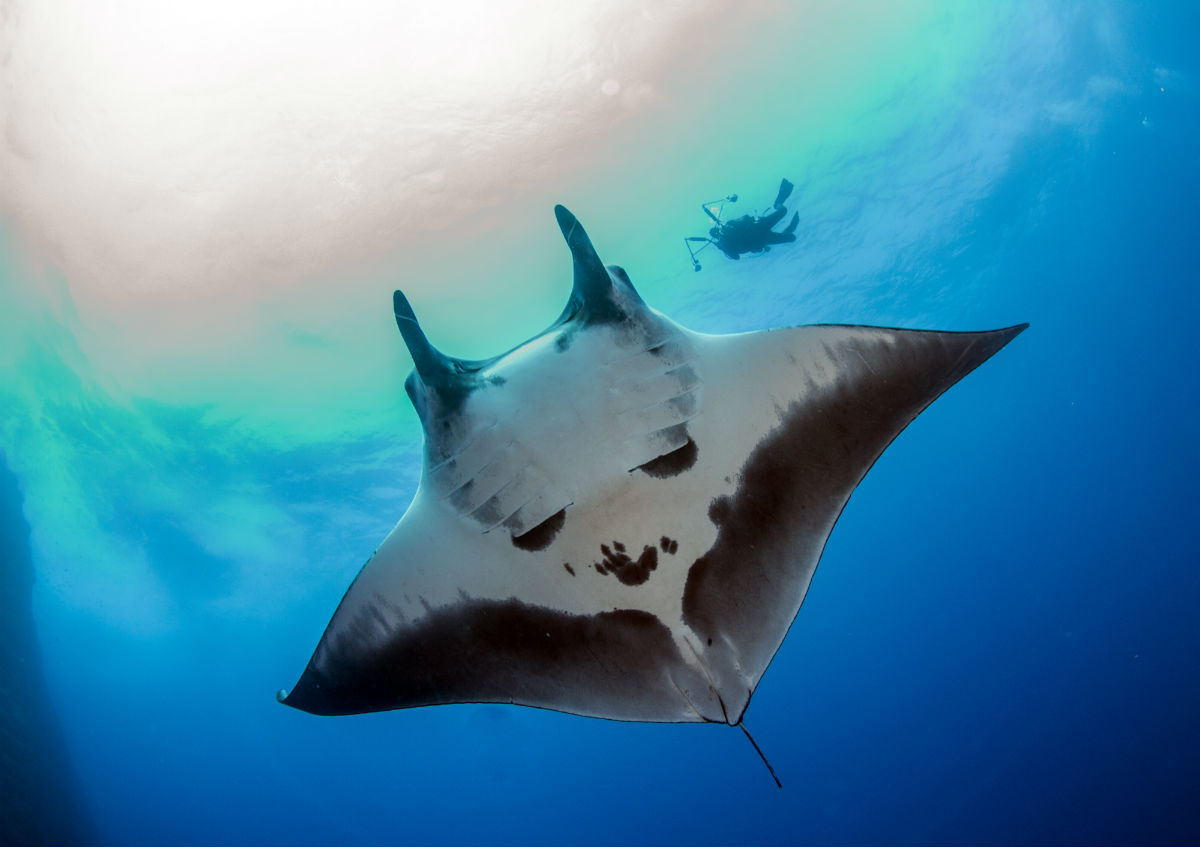Revillagigedo Archipelago to the World Heritage List
The technical evaluation report of natural and mixed properties nominated for inclusion on the World Heritage List, conducted by the World Heritage Program of the International Union for Conservation of Nature (IUCN), includes the Revillagigedo Archipelago, in Mexico.
The World Heritage Program co-ordinates IUCN’s input to the World Heritage Convention in close cooperation with the IUCN Global Protected Areas Program (GPAP) and other units of IUCN both at headquarters and in the regions. It also works closely with IUCN’s World Commission on Protected Areas (WCPA), the world’s leading expert network of protected area managers and specialists, and other Commissions, members and partners of IUCN.
IUCN’s evaluations are conducted according to the Operational Guidelines that the World Heritage Committee has agreed, and which are the essential framework for the application of the evaluation process.
From Mexico, the Revillagigedo Archipelago was nominated. It located in the eastern Pacific Ocean within the Exclusive Economic Zone of Mexico, about 390 km southwest of the southern tip of the Baja California Peninsula, and 720 to 970 km west of the Mexican mainland.
Since 2000, the Islands Ecology and Conservation Group (Grupo de Ecología y Conservación de Islas, GECI), in collaboration with the Mexican government and international donors, has worked systematically in a project for the comprehensive restoration of the Revillagigedo Archipelago. By 2003 the eradication of invasive pigs and feral sheep on the Clarión Island was achieved. In 2008, thanks to a Binational US-Mexico Fund and with the collaboration of the Mexican National Institute of Ecology and Climate Change (INECC) the restoration project of the Socorro Island began. From 2011, the project also includes the participation of the American Bird Conservancy (ABC), The National Fish and Wildlife Foundation (NFWF) and the World Wildlife Fund—Carlos Slim Foundation partnership.
The eradication of sheep was completed in 2012 in the area; and by 2014, its absence was statistically confirmed. The cat eradication project began in 2011 through the integration of a plan elaborated by GECI and reviewed by international experts. To date, the cat eradication progress is estimated at 70%. It is expected to confirm their absence by 2018.
From the eradication of invasive sheep, fast recovery of plant coverage in 20 monitored quadrants was observed. Plant coverage of 30-50% in 2009 increased to more than 90% in 2014. By analyzing satellite images, an increase in vegetation coverage in 11% of the surface of the island was determined, corresponding to 1450 hectares. In a process of accelerated restoration, increased availability of food and shelter has allowed increasing populations of endemic birds and endemic reptile. The monitoring confirms the increase in population of lizards. Likewise, there is more abundance of birds in the areas that previously had not vegetation.
The Revillagigedo Archipelago Biosphere Reserve is made up of four remote islands and their surrounding waters; from largest to smallest surface, the islands are: Socorro, Clarión, San Benedicto and Roca Partida. These geographically isolated oceanic islands and their adjacent waters are among the most beautiful ecosystems and landscapes in the world. This archipelago is part of a submerged mountain range, with the four islands representing the peaks of volcanoes emerging above sea level. The geographical isolation of the archipelago along with their particular oceanographic conditions results in an extraordinary marine productivity and high biodiversity. Therefore in early 2015 he was nominated as a “World Heritage Site”.

In addition, thanks to the location as Socorro and Clarion Islands in the Pacific Ocean, Mexico has the thirteenth Exclusive Economic Zone (EEZ) most extensive in the world, with an area of more than three million square kilometers. The Reserve is located in the Mexican Tropical Pacific, at 382.7km from Cabo San Lucas, Baja California Sur, and at 661.6 km from Manzanillo, Colima.
Socorro Island has an area of 132 km2 and a maximum altitude of 1,040 meters over the sea level. It is inhabited by 117 species of vascular plants, of which 33% are endemic, i.e. they do not exist elsewhere in the world. It has an endemic species of reptile. It is inhabited by 103 species of birds, including terrestrial, marine, coastal and migratory. Eight species of land birds are endemic. The marine avifauna of Socorro Island consists of at least 10 oceanic species and 13 coastal species, including gulls, herons, boobies, frigates and terns. Of these, the Revillagigedo Shearwater (Puffinus auricularis), endemic to the archipelago, it is one of the most threatened birds in Mexico, with an estimating a population of just 100 pairs in Socorro Island.
Socorro Island ecosystem was damaged over 150 years by the presence of feral sheep (Ovis aries). The sheep caused habitat modifications due to massive consumption of endemic plants. In turn, this caused loss of vegetation coverage in 30% of the surface of the island, soil compaction and erosion, which consequently affected the marine ecosystem. The abundance of arthropods and terrestrial vertebrates declined in the areas where vegetation was lost. The presence of feral cat (Felis catus) is another serious problem. They were introduced in the seventies and adapted well to the conditions of the island. As predators, they have had a very serious effect on the native bird life and the blue lizard (Urosaurus auriculatus). The feral cat contributed to the habitat destruction caused by the sheep, and to the extinction in the wild of Socorro dove (Zenaida graysoni). Cats have also endangered other species such as the dwarf tecolote (Micrathene whitneyi graysoni), the Socorro mockingbird (Mimus graysoni) and Revillagigedo shearwater, which have been officially declared as “probably extinct” or “endangered”. The presence of domestic mouse (Mus musculus), even though is less damaging than the impact of the cat and sheep, it is also negative.


